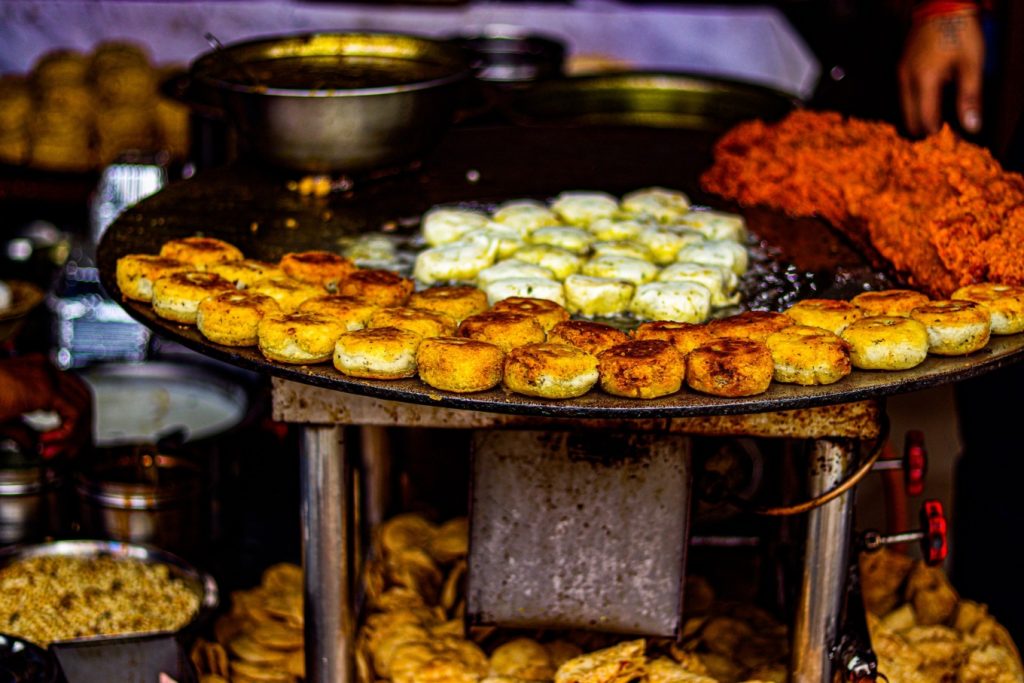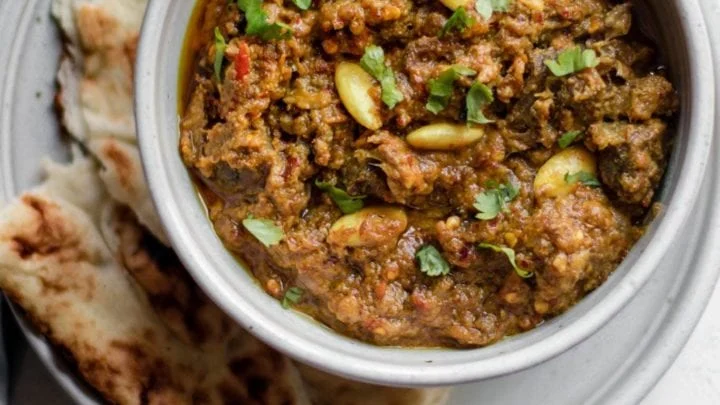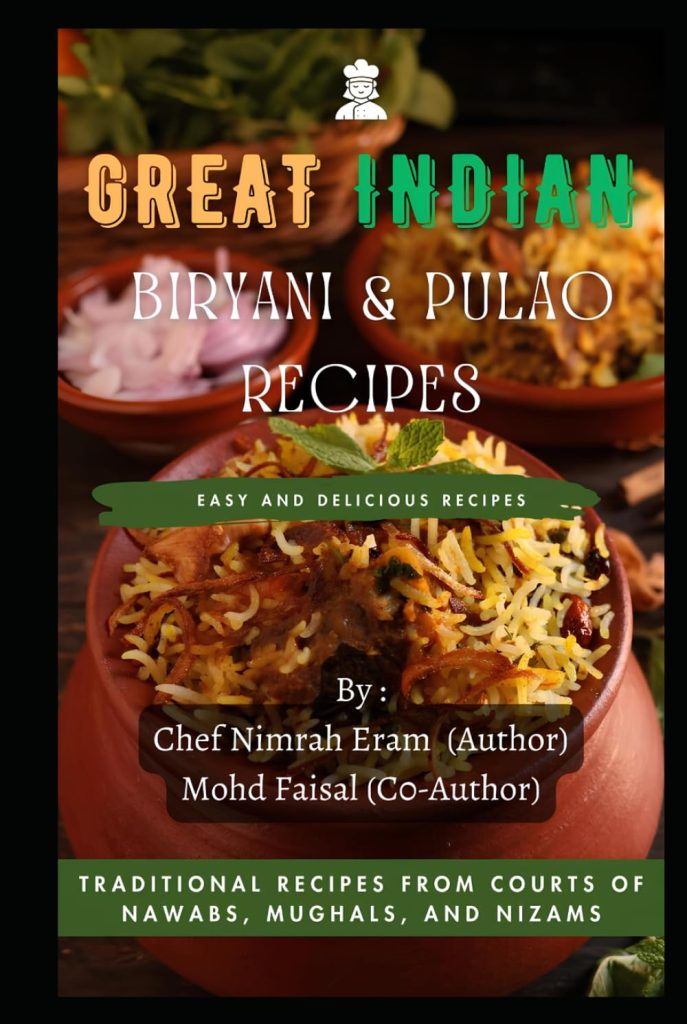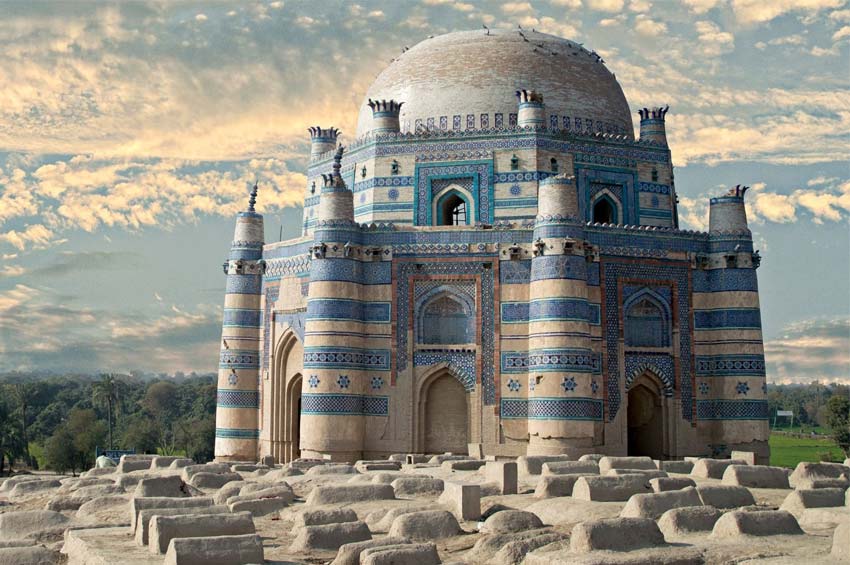Pakistani cuisine is a tantalizing mosaic of flavors, textures, and aromas that reflect the country’s rich cultural tapestry. Situated at the crossroads of South Asia, Central Asia, and the Middle East, Pakistan boasts a culinary tradition influenced by a multitude of regional and historical factors.
From the hearty dishes of Punjab to the spicy curries of Sindh, the diverse offerings of Pakistani cuisine are sure to captivate any food enthusiast.
In this article, we’ll embark on a flavorful journey through the key elements, iconic dishes, and regional specialties that define Pakistani food. Whether you’re a seasoned chef or a home cook looking to explore new horizons, there’s something here to inspire your next culinary adventure.
A Guide To Eating Like A Local
Discover how to enjoy Pakistani cuisine just like the locals do!
The Spice of Life: Key Ingredients in Pakistani Cuisine

A cornerstone of Pakistani cuisine is its bold and aromatic use of spices. Common spices include cumin, coriander, turmeric, and garam masala, a fragrant blend of ground spices that adds depth to many dishes. Fresh herbs like cilantro and mint are also staples, providing a bright contrast to the richness of the dishes.
Rice and Bread
Rice and bread are dietary staples in Pakistan. Basmati rice, known for its long grains and aromatic fragrance, is often served with curries and stews. Popular bread varieties include naan, a soft, leavened flatbread often cooked in a tandoor (a cylindrical clay oven), and roti, an unleavened bread made from whole wheat flour.
Lentils and Beans
Lentils and beans are crucial components of Pakistani meals, providing a vegetarian source of protein. Dishes like dal (lentil curry) are not only nutritious but also deeply satisfying.
Meats
Meat plays a significant role in Pakistani cuisine, with chicken, mutton, beef, and fish being the most commonly used. These meats are often marinated in spices and cooked to perfection, whether grilled, stewed, or fried.
Dairy
Dairy products like yogurt, ghee (clarified butter), and paneer (fresh cheese) are also widely used, adding creaminess and richness to many dishes.
Regional Cuisines of Pakistan

Pakistan’s diverse regions each have their unique culinary traditions, offering a wide array of dishes that reflect the local ingredients and cultural influences.
Punjabi Cuisine
Punjab, the land of five rivers, is known for its hearty and robust cuisine. The fertile plains of Punjab are perfect for agriculture, making it the granary of Pakistan. This abundance is reflected in the rich, buttery dishes that are characteristic of Punjabi cuisine.
Butter Chicken (Murgh Makhani):
A world-renowned dish, butter chicken features tender pieces of chicken cooked in a creamy tomato sauce, enriched with butter and cream. The use of spices like garam masala and fenugreek leaves give it a distinctive flavor.
Saag Paneer:
This vegetarian delight combines fresh spinach (saag) with paneer in a spicy and creamy sauce. It’s often enjoyed with makki di roti, a type of cornbread.
Amritsari Fish:
Named after the city of Amritsar, this dish consists of fish filets marinated in a blend of spices and gram flour, then deep-fried to crispy perfection.
Sindhi Cuisine
Sindh, located in the southern part of Pakistan, boasts a cuisine that is both spicy and flavorful. The region’s proximity to the sea means seafood features prominently in its dishes.
Sindhi Biryani:
This variation of biryani is known for its spicy and aromatic rice, cooked with marinated meat and potatoes. The addition of fresh mint, cilantro, and fried onions gives it a unique taste.
Sindhi Curry:
A tangy and spicy curry made with tamarind, gram flour, and an assortment of vegetables. It’s typically served with plain rice and a side of fried fish.
Palla Fish:
A specialty of Sindh, palla fish is marinated with spices and cooked either fried or grilled. Its rich flavor and tender texture make it a beloved dish among locals.
Balochi Cuisine
Balochistan, the largest province of Pakistan by area, offers a cuisine that is as rugged and hearty as its landscape. The Balochi people are known for their love of meat, particularly lamb and goat.
Sajji:
Perhaps the most famous Balochi dish, sajji is whole lamb or chicken marinated simply with salt and sometimes stuffed with rice, then slow-cooked on skewers over an open fire. The result is a smoky, tender, and flavorful meat that’s often served with naan or rice.
Kaak:
Also known as stone bread, kaak is a traditional Balochi bread that is cooked on hot stones. It’s crispy on the outside and soft on the inside, making it a perfect accompaniment to meat dishes.
Pashtun Cuisine
The Pashtun people, primarily found in Khyber Pakhtunkhwa and parts of Balochistan, have a cuisine that is simple yet flavorful, with a strong emphasis on meat and wheat-based dishes.
Chapli Kebab:
These are flat, round kebabs made from ground meat (usually beef or mutton) mixed with onions, tomatoes, and a variety of spices. They’re typically fried and enjoyed with naan and a side of yogurt.
Peshawari Naan:
Named after the city of Peshawar, this naan is stuffed with a mixture of nuts, raisins, and coconut, offering a sweet contrast to the savory kebabs.
Kabuli Pulao:
This dish features basmati rice cooked with chunks of meat, carrots, and raisins, often garnished with almonds and pistachios. It’s a festive dish that’s both visually appealing and delicious.
READ MORE: Discover The Best Places To Visit In Pakistan: 10 Must-Visit Destinations
Street Food and Snacks

No exploration of Pakistani cuisine would be complete without mentioning the vibrant street food culture. Street vendors offer a plethora of snacks that are perfect for a quick bite or a casual meal.
Chaat:
This category includes a variety of snacks made with chickpeas, potatoes, and yogurt, all topped with a tangy tamarind chutney and crispy fried dough. Aloo chaat, samosa chaat, and dahi puri are popular variations.
Gol Gappay (Pani Puri):
These are hollow, crispy spheres filled with a spicy and tangy water, tamarind chutney, chickpeas, and potatoes. They’re eaten whole, creating an explosion of flavors in your mouth.
Pakoras:
These are deep-fried fritters made from gram flour batter and vegetables like potatoes, spinach, or onions. They are a favorite during the rainy season and are often enjoyed with a cup of hot chai.
Sweet Treats

Pakistani cuisine also boasts an array of delectable desserts that are perfect for satisfying your sweet tooth.
Gulab Jamun:
These are soft, syrup-soaked balls made from milk solids and flour, flavored with cardamom and rosewater. They are often served warm and melt in your mouth.
Jalebi:
A popular sweet, jalebi consists of deep-fried spirals of batter soaked in a sugary syrup. It’s crispy on the outside and syrupy on the inside, making it a delightful treat.
Kheer:
This is a creamy rice pudding made with milk, sugar, and rice, flavored with cardamom and garnished with nuts and raisins. It’s often enjoyed during festive occasions and family gatherings.
READ MORE: Exploring Milan’s Culinary Scene: A Local’s Guide
Cooking Pakistani Cuisine at Home

Cooking Pakistani cuisine at home can be a rewarding experience. With the right ingredients and a bit of practice, you can bring the rich flavors of Pakistan to your kitchen.
Spice Sets and Mixes:
Spices are the heart and soul of Pakistani cuisine, transforming simple ingredients into flavorful masterpieces. To recreate authentic Pakistani dishes at home, it’s essential to have a well-stocked spice cabinet. A good spice set will typically include staples such as cumin, coriander, turmeric, chili powder, and garam masala. These foundational spices are used in a wide variety of recipes, from curries and stews to marinades and biryanis.
Cumin and Coriander:
These spices often go hand-in-hand, providing a warm, earthy base to many dishes. Ground cumin adds a smoky note, while coriander seeds or powder contribute a citrusy undertone.
Turmeric:
Known for its vibrant yellow color, turmeric not only imparts a rich hue but also adds a slightly bitter, warm flavor. It’s a key ingredient in curries and rice dishes, with the added benefit of its anti-inflammatory properties.
Chili Powder:
Pakistani cuisine loves its heat, and chili powder delivers that essential kick. Depending on your preference, you can adjust the amount to make your dishes milder or spicier.
Garam Masala:
This fragrant spice mix is a staple in many households. Typically made from a blend of cinnamon, cloves, cardamom, and other spices, garam masala is usually added towards the end of cooking to enhance the aroma and flavor of the dish.
Other Essential Spices:
While these are the basics, having additional spices like black pepper, fenugreek, and mustard seeds can further enrich your cooking. Many recipes also call for whole spices to be toasted and ground fresh, which releases their full flavor potential.
For convenience and authenticity, you might consider purchasing pre-mixed spice blends. Many reputable brands offer Pakistani spice mixes that ensure you get the perfect balance of flavors without the guesswork. These mixes are particularly useful for beginners who might not be familiar with the nuances of blending spices.
Ready-to-Use Spice Mixes:
Products like pre-blended curry powders, biryani mixes, and tandoori masala are available and can save time while ensuring that your dishes taste just right. These mixes are created by experts and capture the essence of traditional Pakistani cooking.
Freshness and Quality:
When buying spices, freshness and quality are key. Whole spices keep longer and retain their flavor better than pre-ground ones. Investing in a good spice grinder can make a significant difference, allowing you to grind spices as needed and ensure maximum flavor.
Storage:
Proper storage is also crucial. Keep your spices in airtight containers, away from light and heat, to preserve their potency. Consider labeling them with purchase dates to keep track of their freshness.
By equipping your kitchen with these essential spices and mixes, you’ll be well on your way to creating delicious, authentic Pakistani dishes that will impress your family and friends. Whether you’re making a simple dal or a complex biryani, the right spices can make all the difference.
Cookware:

To truly immerse yourself in Pakistani cuisine, having the right cookware is essential. The traditional cooking methods and equipment used in Pakistan can greatly enhance the flavor and authenticity of your dishes. Here are some key pieces of cookware that will help you recreate the rich and diverse flavors of Pakistani food at home.
Karahi:
The karahi, a deep, circular cooking pot similar to a wok, is indispensable in Pakistani kitchens. It’s used for frying, simmering, and sautéing a variety of dishes. Whether you’re making chicken karahi, a popular tomato-based chicken curry, or frying pakoras, a karahi provides the high sides needed to handle large quantities of food and oil.
Tandoor:
A tandoor is a cylindrical clay oven traditionally used for baking naan and roasting meats. While installing a traditional tandoor at home might be challenging, you can find smaller, electric tandoor ovens that replicate the high-heat cooking environment. These ovens are great for achieving the authentic char and flavor of tandoori chicken and naan.
Handi:
A handi is a deep, narrow-mouthed cooking pot made of metal or clay. It’s perfect for slow-cooking stews, biryanis, and other dishes that require a long simmering time. The shape of the handi helps retain heat and moisture, allowing flavors to meld beautifully.
Degchi:
A degchi is a traditional cooking pot with a rounded bottom and a wide mouth, used for making large quantities of pilafs, curries, and stews. It’s particularly useful for dishes that require constant stirring and evaporation, such as biryani or haleem.
Pressure Cooker:
While not unique to Pakistani cuisine, a pressure cooker is incredibly useful for cooking lentils, meat, and beans quickly. It’s a time-saving device that retains the nutrients and flavors of the ingredients, making it ideal for busy cooks who want to prepare authentic meals without spending hours in the kitchen.
Tawa:
A tawa is a flat, concave griddle used for making flatbreads like roti, paratha, and chapati. The high, even heat of a tawa ensures that your breads cook quickly and evenly, developing the perfect texture and flavor.
Mortar and Pestle:
Many Pakistani recipes call for freshly ground spices, which release more flavor than pre-ground varieties. A mortar and pestle allows you to grind spices and herbs to your desired consistency, enhancing the freshness and potency of your dishes.
Spice Box (Masala Dabba):
To keep your essential spices organized and within easy reach, consider using a spice box. A masala dabba typically has several small compartments for different spices, making it easy to add the right seasonings to your dishes as you cook.
Clay Pots:
Clay pots, or matkas, are traditionally used for slow-cooking and enhancing the flavor of dishes. The porous nature of clay allows heat and moisture to circulate, imparting a unique, earthy flavor to the food. They are especially good for making traditional stews and yogurt.
Serving Dishes:
Presentation is also an important part of Pakistani dining. Using traditional serving dishes, such as copper or brass bowls and platters, can add an authentic touch to your meals and enhance the dining experience.
By equipping your kitchen with these essential pieces of cookware, you’ll be well-prepared to dive into the world of Pakistani cuisine. Each tool and piece of equipment plays a specific role in the preparation and cooking process, helping you achieve the rich, complex flavors that characterize Pakistani dishes. Whether you’re a seasoned chef or a novice cook, these traditional tools will bring you closer to the heart of Pakistan’s culinary heritage.
Cookbooks:
Embarking on a culinary journey through Pakistani cuisine can be both exciting and rewarding. Cookbooks offer a wealth of knowledge, from detailed recipes and cooking techniques to cultural insights and personal stories. Here are some recommended cookbooks that will guide you in exploring the rich and diverse flavors of Pakistani food.
1. Summers Under the Tamarind Tree by Sumayya Usmani

This beautifully written cookbook is part memoir, part recipe collection. Sumayya Usmani shares her childhood memories and traditional family recipes, offering a heartfelt introduction to Pakistani cuisine. The book includes a variety of dishes, from street food snacks to elaborate feasts, making it a great resource for cooks of all levels.
2. The Pakistan Cookbook: Authentic Recipes from Across Pakistan by Aisha Khan

Aisha Khan’s cookbook is a treasure trove of authentic Pakistani recipes. It covers a broad spectrum of dishes, from hearty meat curries to delicate desserts. The book is structured to guide you through the basics before moving on to more complex recipes, making it suitable for beginners and experienced cooks alike. Each recipe is accompanied by a brief history, adding a cultural context to the culinary experience.
3. Karachi Kitchen: Classic and Contemporary Flavors of Pakistan by Kausar Ahmed

“Karachi Kitchen” delves into the culinary diversity of Pakistan’s largest city. Kausar Ahmed shares his take on both traditional and contemporary recipes, showcasing the dynamic food culture of Karachi. The book features step-by-step instructions and beautiful photography, making it an excellent addition to any kitchen library.
4. The Food and Cooking of Pakistan: Traditional Dishes From The Home Kitchen by Shezhad Husain

Shezhad Husain’s “The Food and Cooking of Pakistan” is a celebration of Pakistani home cooking. The recipes are easy to follow and use accessible ingredients, making it a great choice for home cooks. The book emphasizes healthy and wholesome meals, reflecting the author’s passion for nutritious cooking without sacrificing flavor.
5. Great Indian Biryani and Pulao Recipes: Traditional Recipes from the Courts of Nawabs, Mughals, and Nizams

Although not exclusively focused on Pakistani cuisine, this cookbook offers an in-depth exploration of biryani, a beloved dish in Pakistani cuisine. Nimrah Eram and Mohd Faisal’s “Great Indian Biryani and Pulao Recipes” provides a collection of diverse biryani recipes, highlighting regional variations and unique flavor profiles. This cookbook is perfect for those who want to master the art of making biryani and understand its cultural significance.
Choosing the Right Cookbook for You
When selecting a cookbook, consider what you hope to achieve in your culinary journey. Are you looking for a comprehensive guide to Pakistani cooking, or do you want to specialize in a specific type of dish like biryani or street food? Here are a few tips to help you choose the right cookbook:
Beginner-Friendly Guides:
If you’re new to Pakistani cuisine, look for cookbooks that provide detailed instructions and include background information on ingredients and techniques. Books like “Summers Under the Tamarind Tree” and “The Pakistan Cookbook” are excellent choices for novices.
Regional Specialties:
For those interested in exploring the regional diversity of Pakistani food, opt for books that cover various provinces and their unique dishes. “Karachi Kitchen” offers great insight into different regional cuisines.
Health-Conscious Recipes:
If you’re focused on healthy eating, “The Food and Cooking of Pakistan by Shezhad Husain” provides nutritious and wholesome recipes that don’t compromise on flavor.
Comprehensive Collections:
For a more extensive exploration, consider cookbooks that offer a broad range of recipes and cover both traditional and contemporary dishes. “Summers Under the Tamarind Tree” and “Pakistani Cookbook” fit this category well.
Specialized Cookbooks:
If you have a particular interest, such as making the perfect biryani, “Great Indian Biryani and Pulao Recipes” will be an invaluable resource.
Enhancing Your Cooking Experience
To fully enjoy the process of cooking Pakistani food, consider investing in some additional tools and resources:
Ingredient Sourcing:
Authentic Pakistani cuisine relies on specific spices and ingredients. Many cookbooks provide guidance on sourcing these items, whether from local specialty stores or online. For convenience, you can find spice sets and mixes tailored to Pakistani cooking.
Cookware:
As mentioned earlier, having the right cookware can make a significant difference. Books often recommend specific pots, pans, and tools that are traditional to Pakistani cooking. Consider using items like a karahi, tandoor oven, or handi to enhance the authenticity of your dishes.
Online Resources:
Some cookbooks come with additional online content, such as video tutorials or downloadable recipe cards. These resources can be particularly helpful for visual learners or those who appreciate step-by-step demonstrations.
Cooking Classes:
If you’re passionate about learning, look for authors or chefs who offer cooking classes or workshops. These can be a fun and interactive way to deepen your understanding of Pakistani cuisine.
By choosing the right cookbook and complementing it with the proper tools and resources, you’ll be well-equipped to create delicious, authentic Pakistani dishes in your own kitchen. Whether you’re preparing a simple dal or an elaborate feast, these cookbooks will guide you every step of the way, bringing the rich and vibrant flavors of Pakistan to your table.
Conclusion
Pakistani cuisine is a delightful journey through a world of flavors and traditions. Its diverse regional specialties, rich use of spices, and array of delicious dishes make it a cuisine worth exploring and enjoying.
Whether you’re sampling the hearty fare of Punjab, the spicy dishes of Sindh, the rugged flavors of Balochistan, or the simple yet flavorful meals of the Pashtun people, Pakistani food offers something for everyone.
So why not take a culinary trip to Pakistan right from your kitchen? With the right ingredients and a bit of culinary curiosity, you can bring the vibrant tastes of Pakistan to your table. Happy cooking!
FAQs (Frequently Asked Questions)
1. What is the most famous Pakistani cuisine?
A: Biryani is the most famous Pakistani cuisine, loved for its rich spices and flavors.
2. Why is Pakistani cuisine famous?
A: Pakistani cuisine is famous for its bold spices, diverse dishes, and blend of regional flavors.
3. What is traditional Pakistani cuisine?
A: Traditional Pakistani cuisine includes dishes like Nihari, Kebabs, Haleem, and Roti.
4. What is Pakistan’s special food?
A: Pakistan’s special food includes iconic dishes like Karahi, Biryani, and Sajji.













